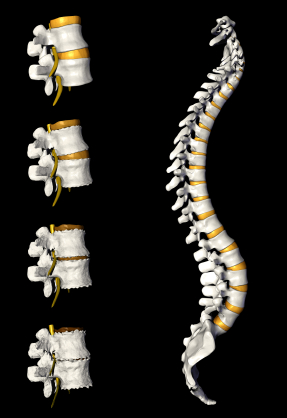Stages of Degeneration
One thing I’ve noticed in our Burlington Chiropractic and Physiotherapy clinic is that patients get a look of shock when I tell them that I see arthritis on their x-ray. Today, I’m going to shed a little light on the topic to get some perspective…
What is arthritis?
There are different types of arthritis. Perhaps the first, obvious distinction to make is the difference between inflammatory and degenerative arthritis. For most people that visit our Burlington clinic, the finding is a degenerative type of arthritis. An easy way to understand this type of arthritis is “wear and tear” in the joint. This is the type of arthritis that we’re discussing in today’s blog. Synonyms (other terms that mean the same thing) are degenerative joint disease, degenerative disc disease, osteoarthritis and degenerative arthritis to name a few. Symptoms of arthritis include pain when trying to move after being still for a period of time. Examples include getting out of bed or getting up from the couch after sitting for a while. Typical symptoms of arthritis are pain, joint stiffness and altered joint movement. Although osteoarthritis is not an inflammatory condition, an arthritic joint can swell or inflame if irritated enough.
Where does arthritis happen?
Arthritis can happen in practically every joint. Common areas include the neck, the lower back, the hips, knees, toes and fingers. In the case of the spine, it is usually called degenerative joint disease or degenerative disc disease. In other areas of the body we usually call it osteoarthritis.
When does arthritis happen?
Arthritis typically starts in the late twenties / early thirties and progresses from that point. Keep in mind, as mentioned earlier, many patients show degenerative changes on their x-rays yet have no symptoms.
Why does arthritis happen?
Historically, it was believed that arthritis was due to use. For example, if you had a manual labour job that required a lot of repetitive use over many years, it was logically expected to see early arthritis or wear and tear in that area. Similar, if you’ve had a significant trauma to a joint, it may be more prone to arthritic degeneration (arthritis) in the future. We’ve now learned that genetics play a large role. If everyone in your family had significant arthritis, you may be at risk.
Diagnosis of arthritis?
Arthritis is diagnosed when your practitioner combines your relevant history with your presenting condition. For Chiropractors, x-rays are a useful way to objectively assess joint surfaces and get an understanding of the amount of degeneration present. This degeneration may or may not relate to a patient’s symptoms, so as mentioned, a good practitioner will combine all the relevant information and make an accurate diagnosis accordingly.
Treatment for arthritis?
There are many treatment options for arthritis so it’s important to consider all the relevant information. For example, how significant is the joint degeneration? How severe are the symptoms? What other treatments have been attempted? What home strategies (like stretching or strengthening) is the patient doing? What is the patient’s preference for various treatment options? After a thorough history, your Chiropractor or Physiotherapist should review the various options for treatment. Recommendations might include chiropractic adjustments, mobilizations, acupuncture, laser therapy, interferential current, active release technique, graston technique, home stretching or home strengthening.
Do you have arthritis that needs treatment? Unsure if you even have arthritis? Give us a call, we can help! 905.220.7858 or email – info@burlingtonsportstherapy.com









